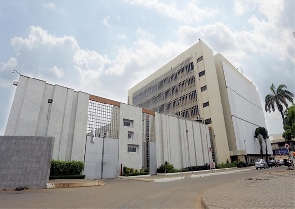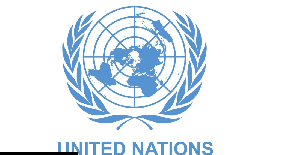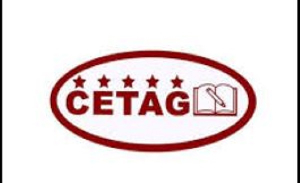The MPC met last week and reviewed recent global and domestic developments, including the outlook for the economy. Below is a summary of the highlights of developments for the first two months of the year and key considerations of the Committee in arriving at its decision on where to position the Policy Rate.
Global economic recovery is underway although new variants of the COVID-19 virus weighed in on economic activity in the last quarter of 2020. The continued policy support and ongoing vaccine rollout efforts have helped to boost optimism and investor confidence for a stronger rebound in economic activity for 2021.
Updated projections from the IMF, released in January 2021, show global growth at 5.5 percent in 2021, 0.4 percentage points higher than the October 2020 projection.
Global financing conditions remained benign as major central banks reaffirmed the continuation of their asset purchase programs, providing continued policy support and improved prospects about the global economy due to ongoing vaccination efforts, and the large fiscal stimulus in the United States.
Borrowing costs remain generally low despite a marginal pick up in long term bond yields in some advanced countries and the ongoing recovery in equity valuations. Emerging Market and Developing Economies faced improved financing conditions with robust debt issuance in the first two months of the year which helped ease currency pressures.
In the medium-term, global financing conditions prospects remain favourable, Monetary Policy Committee driven by the accommodative monetary policy environment which is expected to persist until global growth firms.
Headline inflation has begun picking up in some advanced and emerging market economies, reflecting the sharp rise in commodity prices and past currency depreciation.
However, underlying inflation remains subdued in advanced economies, weighed down by the still sizeable spare capacity and the significant slack in labour and product markets. In emerging market and frontier economies, currency movements and COVID-related supply-side constraints are expected to drive price movements.
The Ghanaian economy is on a rebound with a sustained momentum in pick-up in economic activity. The Bank’s updated Composite Index of Economic Activity (CIEA) recorded an annual growth of 13.9 percent in January 2021, the highest since December 2019, compared to 3.4 percent in the corresponding period of 2020. The key drivers of economic activity during the period were construction, imports, industrial consumption of electricity, domestic VAT, passenger arrivals at the airport, and port activity.
Results from the Bank’s latest confidence surveys conducted in February 2021 showed some softening of both consumer and business sentiments.
The softening of consumer confidence reflected heightened concerns about the potential reimposition of restrictions following the upsurge in COVID-19 cases in the first two months of the year.
Similarly, business sentiments about the general economic situation also deteriorated on concerns that re-imposition of restrictions would further have detrimental consequences on the attainment of their short-term goals.
However, with the commencement of the vaccine roll out and gradual lifting of remaining restrictions, the expectation is for both business and consumer confidence to rebound.
Inflation remained above pre-pandemic levels with price developments in the first two months of 2021 broadly mixed. The two readings in the first two months 3 showed that headline inflation eased from 10.4 percent in December 2020 to 9.9 percent in January 2021, and subsequently went up to 10.3 percent in February, marginally outside the medium-term target band of 8±2 percent.
The uptick in inflation in February was mainly driven by non-food inflation, which rose to 8.8 percent from 7.7 percent in January. Food inflation, on the other hand, eased to 12.3 percent from 12.8 percent over the same comparative period.
Underlying inflation pressures also went up marginally over the period, consistent with headline inflation trends. The Bank’s core inflation measure, which excludes energy and utility, moved up marginally. Inflation expectations of businesses inched up in February, while both consumer and financial sector inflation expectations declined.
On budget execution, provisional data from the Ministry of Finance indicated that 2020 recorded an overall broad cash budget deficit of 11.7 percent of GDP against the revised target of 11.4 percent of GDP for the year.
The primary balance also recorded a deficit of 5.3 percent of GDP compared to the revised target deficit of 4.6 percent of GDP. Over the review period, total revenue and grants amounted to GH¢55.1 billion (14.3 percent of GDP), marginally higher than the revised target of GH¢53.7 billion (13.9 percent of GDP).
Total expenditures and arrears clearance amounted to GH¢100.1 billion (26.1 percent of GDP) against the revised target of GH¢97.7 billion (25.4 percent of GDP).
The high deficit pushed the stock of public debt to 76.1 percent of GDP (GH¢291.6 billion) at the end of December 2020 compared with 62.4 percent of GDP (GH¢218.2 billion) at the end of December 2019. Of the total debt stock, domestic debt amounted to GH¢149.8 billion (39.1 percent of GDP), while the external debt was GH¢141.8 billion (37 percent of GDP).
10. The 2021 budget has reset fiscal policy on a consolidation path with the deficit projected to decline to 9.5 percent of GDP with a corresponding primary deficit of 1.3 percent of GDP. Total revenues and grants are estimated at GH¢72.5 billion 4 (16.7 percent of GDP), while total expenditures and arrears payment are estimated at GH¢113.8 billion (26.2 percent of GDP).
The projected fiscal consolidation path is mainly due to expected increased revenue mobilisation made up of both revenue administration efficiency and new revenue measures.
Developments in monetary aggregates in February 2021 showed sustained growth in total liquidity, reflecting the impact of the fiscal stimulus and complementary monetary policy measures implemented to mitigate the adverse impact of the COVID-19 pandemic in 2020. These policies culminated in a significant expansion in the balance sheet of the Central Bank, on account of considerable increase in the Net Domestic Assets.
As a result, the central bank’s base money as at February 2021 recorded an increase of 34.8 percent, compared with a modest growth of 19.1 percent recorded in the corresponding period of 2020. The increase in base money filtered through to broad money supply (M2+) which increased, on a year-on-year basis, by 29.1 percent, relative to 14.5 percent recorded in the corresponding period in 2020. The observed increase in M2+ was reflected in an expansion in currency outside banks and total deposits.
Private sector credit growth slowed in the first two months of the year due to constrained demand for credit. Annual nominal growth in private sector credit slowed to 7.4 percent in February 2021 compared with 21.8 percent, in the corresponding period of 2020. Similarly, real private sector credit contracted by 2.7 percent compared to a growth of 12.9 percent over the same comparative period.
Interest rates on the money market broadly showed downward trends for short dated instruments and mixed trends for medium to long-dated instruments. The 91-day and 182-day Treasury bill rates declined to 13.6 percent and 14.0 percent respectively in February 2021, from 14.7 percent and 15.2 percent respectively, in February 2020. Similarly, the rate on the 364-day instrument decreased to 16.9 percent from 17.8 percent over the same comparative period.
Rates on the secondary bond market have also generally declined, except for rates on the 5- year bond which increased by 35 bps to 19.9 percent. Yields on 2-year, 3-year, 6-5 year and 7-year bonds declined, while rates on the 10-year, 15-year and 20-year bonds remained unchanged.
The weighted average interbank rate declined to 13.6 percent from 15.9 percent, in line with the cut in the monetary policy rate in March 2020, and improved liquidity conditions due to the COVID regulatory relief measures. Consequently, average lending rates of banks declined to 21.0 percent in February 2021 from 23.4 percent in the same period of 2020, consistent with developments in the interbank market.
The performance of the banking sector remained strong through end-February 2021, with robust growth in total assets, deposits and investments. Total assets increased by 18.5 percent on a year-on-year basis to GH¢152.0 billion, reflecting strong growth in investments in government securities by 45.9 percent to GH¢67.9 billion.
Total deposits recorded a year-on-year growth of 25.1 percent to GH¢104.0 billion reflecting strong liquidity flows emanating from the COVID-19 fiscal stimulus, payments to contractors, SDI depositors, and clients of SEC-licensed fund managers.
Overall, the impact of the pandemic on the industry’s performance seems moderate as banks remained liquid, profitable and well-capitalized.
Financial soundness indicators remained positive underpinned by robust solvency, liquidity, and profitability indicators.
The industry’s Capital Adequacy Ratio was 20.2 percent at end-February 2021, well above the regulatory minimum threshold.
Core liquid assets to short-term liabilities was 26.5 percent in February 2021 compared with 31.3 percent a year ago. Net interest income for the first two months grew by 10.9 percent to GH¢2.0 billion compared to 25.9 percent a year ago. Net fees and commissions grew by 13.7 percent to GH¢435.4 million, compared with 18.4 percent growth recorded during same period last year, reflecting the observed dip in growth in loans and trade finance-related businesses.
Operating income rose by 8.7 percent, lower than the corresponding growth of 23.6 percent, but was supported by cost control measures which resulted in operating expenses declining by 0.3 percent, in contrast to the 18.6 percent increase for same period in 2020.
Loan loss provisions, however, grew sharply by 62.2 percent, significantly 6 higher than the 6.5 percent a year ago, reflecting continued elevated credit risks. Profit before tax, increased to GH¢1.1 billion over the first two months of 2021 compared to GH¢1.0 billion the same period last year.
Notwithstanding the sluggish credit demand and supply conditions due to the pandemic, the COVID-related regulatory reliefs and policy measures continue to support lending activities, with New Advances for the first two months in 2021 totaling GH¢4.7 billion. In the latest Credit Conditions Survey, banks expect an increase in demand for credit and are signaling an ease in credit stance over the next two months.
Non-Performing Loans (NPL) ratio increased from 13.8 percent in February 2020 to 15.3 percent in February 2021 arising partly from the general pandemic-induced repayment challenges as well as some bank-specific loan recovery challenges.
The average price of Ghana’s major commodities (cocoa, gold and crude oil) traded mixed in February 2021. Crude oil prices gained 12.6 percent to settle at an average price of US$62.3 per barrel compared to US$55.3 per barrel in January, supported by lower US crude inventories, rising winter fuel demand, and the massive rollout of vaccine which improved global growth prospects. On the contrary, gold prices suffered some losses due to the strengthening of the US dollar and rising US Treasury yields.
As a result, gold prices declined by 3.0 percent in February 2021 to US$1,810.3 per ounce compared to US$1,867.0 per ounce in January. Cocoa prices declined marginally to US$2,508.8 per tonne in February 2021 compared to the US$2,523.9 per tonne a month earlier. A combination of weak demand due to the pandemic and excess supply in Ivory Coast, accounted for the price drop.
These commodity price movements adversely impacted the trade balance. Total exports contracted by 9.2 percent year on-year to US$2.5 billion in the first two months of 2021. This was driven mainly by a 25.8 percent year-on-year decline in crude oil exports (due to lower volumes), 12.2 percent decline in cocoa beans7 exports (due to lower volumes and prices), and 5.6 percent decline in gold exports (due to lower volumes).
Total imports, on the other hand, went up by 9.6 percent to US$2.2 billion, underpinned by a 12.9 percent year-on-year increase in non-oil imports due to a pick-up in economic activities. Consequently, the trade balance recorded a lower surplus of US$339.7 million (0.5 percent of GDP) in the first two months of 2021, compared with US$791 million (1.2 percent of GDP) same period in 2020.
Gross International Reserves at the end of February 2021 was US$8,719.7 million, providing cover for 4.2 months of imports of goods and services. The reserve level compares with the end-December 2020 position of US$8,624.4 million, equivalent to 4.1 months of import cover.
Cumulatively, the Ghana Cedi appreciated by 0.6 percent against the US dollar in February 2021, compared with an appreciation of 4.5 percent in the same month of 2020. The Ghana cedi also appreciated by 3.6 percent against the Euro and depreciated by 0.9 percent against the Pound Sterling, compared with corresponding 7.0 percent and 7.8 percent appreciation over the same period in 2020.
Summary and Outlook
The sustained policy support to moderate the impact of the pandemic and the massive rollout of the COVID-19 vaccination programme in advanced economies have significantly improved global growth prospects for 2021 and the medium-term outlook. With the improved outlook, commodity markets, especially crude oil prices, are gradually turning around and cost pressures have begun to emerge due to resurgence in demand coupled with temporary supply constraints.
However, inflation remains generally subdued due to the sizeable spare capacity and labour market slack in advanced economies. Near-term global financing conditions remain favourable and likely to benefit currencies in emerging market and frontier economies, including Ghana. The strong fiscal stimulus in the United States could trigger a rise in bond yields, leading to potential capital flow reversals from emerging markets. However, the Committee is of the view that the Fed’s indication 8 to keep interest rates at low levels will support favourable financing conditions in the near term.
On the domestic front, the Bank’s high frequency indicators have continued to pick up, reflecting the rebound in economic activity. Although business and consumer sentiments softened on the back of the surge in COVID cases in the early months of 2021, the rollout of the vaccination programme has increased optimism about the future and will further add a boost to the anticipated recovery in growth. Even though private sector credit growth remains generally weak due to the pandemic, the rebound of input supplies evidenced by increased non-oil imports should support the ongoing rebound in economic activity.
The banking sector remains well-positioned to continue with the core objective of financial intermediation to support the ongoing recovery process. Banks are projected to sustain the strong performance under mild to moderate stress conditions.
While some of the regulatory reliefs extended to the industry have helped banks’ continued support of the real sector, close monitoring and heightened supervision will be required to address potential vulnerabilities in the industry, as the pandemic lingers.
The 2021 budget has set fiscal policy on an adjustment path albeit slower than originally anticipated. The adjustment for 2021 is expected to be driven, mainly by revenue-enhancing measures, and to a lesser extent, expenditure rationalization due to the need to continue the stimulus programmes.
The Committee assessed achieving the enhanced revenue targets and the heavy reliance on the domestic market as the main risks to the budget.
After declining in January 2021, headline inflation rose in February slightly above the upper band of the medium-term target, driven mainly by non-food prices. The Bank’s forecast, however, remain broadly unchanged with headline inflation expected to return to the target band in the second quarter of 2021.
Risks to inflation in the near-term are broadly balanced, but there are emerging short-term pressures emanating from the rising crude oil prices and the direct and secondary price effects of the revenue measures announced in the 2021 budget. Monetary policy would need to remain vigilant to monitor these risks.
Under the circumstances, the Committee decided to keep the policy rate at 14.5 percent.
Business News of Monday, 22 March 2021
Source: bog.gov.gh













